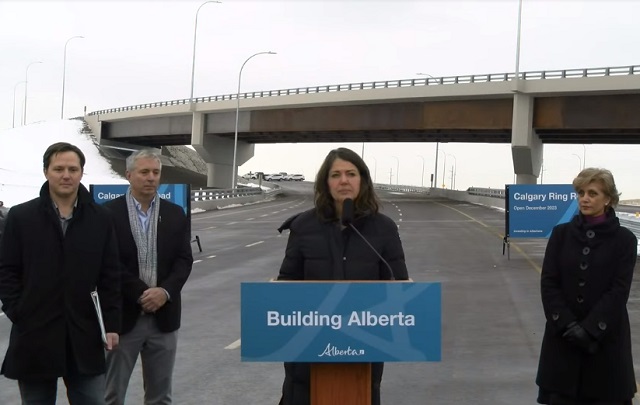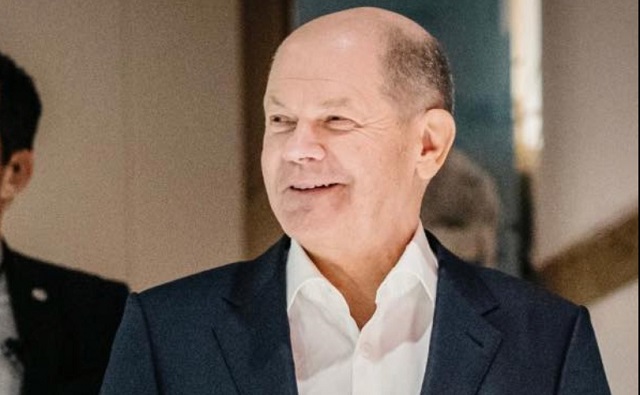Calgary
Response: Tom Milroy Wants To Deport The UCP & Wexiteers, Ban All Weapons & Restrain the Oilpatch

Green Party candidate Tom Milroy exemplifies how NOT to win friends and influence people to be more green-friendly. Among his plethora of tone-deaf tweets, and condescending facebook rants is this gem of a post:
“ I suspect that with oil going for LESS THAN ZERO we could now buy Alberta for cheap, Deport the UCP & the moronic wexiteers to the USA, start the Canadian ban on weapons of all kinds there, build solar & wind farms, restrain the oilpatch workforce and be done with this BS forever!” -@tommilroyjr
I can forgive the poor grammar, after all it’s just twitter, but his callous disregard for the real and palpable pain which Albertan’s have been enduring during the Trudeau Jr. era requires a response. Mr. Milroy is not alone with his hand wringing at the thought of the Alberta energy sector collapsing. PM Justin Trudeau is certain to be equally eager to witness Alberta’s demise, never realizing that the death of the Alberta advantage, is also the death of the Canadian advantage. Perhaps they should take eight minutes to listen to our plight HERE.
Albertans are fiercely patriotic, yet we have been abused by Ottawa to the point where many have come to the unpleasant conclusion that separation is the only way to survive. Tom Milroy clearly thinks that survival instinct is “moronic”, and that all ideas which are conservative are inherently evil. His views are largely shared by many in the Toronto/Montreal crowd which only fuels western alienation. Why would Albertans want to be hitched to a Country which economically attacks, and openly berates them? It’s only natural to consider other options.
The soapbox upon which Mr. Milroy stands is portrayed as environmental, but in fact is xenophobic. Energy workers aren’t like Tom and his friends, which is why they don’t understand them and they choose to berate them. Tom Milroy, you are an unapologetic anti-Albertan bigot with a twitter account. Your ghastly posts are a stain on the fabric of Canadian values.
His claim of moral superiority however has been thoroughly discredited by a recent documentary by..of all people, Michael Moore. In his new documentary, Planet of the Humans Michael Moore destroys the argument that solar and wind are in any way cleaner than Canadian procured fossil fuels. In fact, when you do the math, it’s clear that both wind and solar create a LARGER ecological footprint than Alberta’s Oil Sands.
Photo-Voltaic cells (solar panels) for instance are not made from “sand” as is often claimed. They are created by melting quartz and coal together in a massive furnace. Both quartz and coal are procured from mining, and mining is an incredibly carbon-intensive activity. Cobalt, and other materials which are required for windmills are mined using horrific child labour. Not only are solar and wind not clean energy, they both have a negative net yield when all factors are considered.
Heaped on top of the negative energy yield, massive mining footprint, and excessive carbon load required for “green energy”, is the human suffering which includes horrific child labour. There is nothing moral about six-year-old children working in an African Cobalt mine. Ignoring this fact is nothing short of evil.
Regardless of your beliefs on environmental issues, reacting to ideas that are contrary to your own with name-calling is not helpful, nor is it productive. It’s easy to disregard the pain of others by spouting bigoted epithets at them. It’s easy, and is a sure sign of a lazy mind. What’s difficult is to put yourself in the shoes of others in order to try to understand where they are coming from. Empathy is hard, and requires significant effort from a clear mind which is unshackled by ego. At the moment, empathy seems to be beyond the reach of Mr. Milroy.
The environmentalist groups need to take an honest look in the mirror. Being a jerk to others is not going to sway opinions. Regardless of political leanings, the vast majority of Canadians also want pristine water, clean air, and to have cleaner energy solutions. The technology exists today to achieve all of the above, but we’re just not bringing it to market. Solar and Wind have both been proven to NOT be the solution. The focus must be on reducing consumption, not on punishing production. Passenger cars can easily achieve 100 mpg, and industrial smokestacks can certainly be engineered to emit less than half of the particulates which they are currently belching. The technology has been around since the ’80s, all we have to do is use it.
Caring about the environment is important, but actually doing something about it is far more admirable than proclaiming your moral and intellectual superiority over Albertans. The common assumption is that our energy sector is dirty and immoral. Do you prefer Saudi oil? Shutting down Alberta does nothing to help the environment, all it does is displace the oil production to nations like Saudi Arabia, who throw gays off buildings, behead accused wrongdoers, and force their women to stay covered head to toe. Every sentiment against Alberta energy is a proclamation of support for the Saudi regime, and their human rights abuses.
Alberta energy workers are the highest skilled, safest, and most regulated on earth. As a result, they enjoy healthy compensation which some people bemoan so as to cloak their jealousy. Oh how fun it is to throw stones at the families of energy workers, and denigrate them for enjoying the fruits of their difficult and dangerous labour. How satisfying it must be to turn your nose up to the gun-toting, hunting, fishing, outdoor-loving Albertans who would rather explore nature in the backcountry than bang bongos at a climate change rally. Alberta energy workers have every right to be proud. They provide us all with our way of life, similar to how Soldiers protect our freedoms. Without oil, the global population of roughly 7.8 Billion would not be sustainable. Until other technologies are allowed to flourish, we’re stuck with what we got. Unfortunately Wind and Solar simply don’t fill the gap, regardless of the blind arguments to the contrary.
Mark E. Meincke
Buy the Home Seller’s Bible by clicking HERE
Buy “Why not Me?” HERE
For more stories, visit Todayville Calgary
Alberta
Building a 21st century transit system for Calgary

From the Frontier Centre for Public Policy
Calgary Transit is mired in the past, building an obsolete transit system designed for an archaic view of a city. Before the pandemic, transit carried 45 percent of downtown Calgary employees to work, but less than 10 percent of workers in the rest of the Calgary urban area, showing that Calgary Transit doesn’t really serve all of Calgary; it mainly serves downtown.
That would have worked in 1909, when Calgary’s first electric streetcars began operating and most jobs were downtown. By 2016, less than 15 percent of Calgary jobs were downtown, and the pandemic has reduced that number further.
Rather than design a transit system that serves the entire urban area, Calgary Transit light-rail system reinforced its downtown focus. Transit ridership has grown since the city’s first light-rail line opened in 1981, but it was growing faster before the light rail began operating than it has since then. Now Calgary Transit is planning even more downtown-oriented light-rail lines.
Light rail is an expensive form of low-capacity transit. The word “light” in light rail refers not to weight but to capacity: the American Public Transportation Association’s transit glossary defines light rail as “an electric railway with a ‘light volume’ traffic capacity.” While a light-rail train can hold a lot of people, for safety reasons a single light-rail line can move no more than about 20 trains per hour in each direction.
By comparison, Portland, Oregon runs 160 buses per hour down certain city streets. An Istanbul busway moves more than 250 buses per hour. Bogota Columbia busways move 350 buses per hour. All these transitways cost far less per mile than light rail yet can move more people per hour.
Once they leave a busway, buses can go on any city street, reaching far more destinations than rail. If a bus breaks down or a street is closed for some reason, other buses can find detours while a single light-rail breakdown can jam up an entire rail line. If transportation patterns change because of a pandemic, the opening of a new economic center, or the decline of an existing center, bus routes can change overnight while rail routes take years and cost hundreds of millions of dollars to change.
To truly serve the entire region, Calgary Transit must recognize that buses are faster, more flexible, and can move more people per hour to more destinations at a lower cost than any rail system. It should also recognize that modern urban areas have many economic centers and use buses to serve all those centers.
Besides downtown, Calgary’s major economic centers—the airport, the University of Calgary, Chinook Center, the Seton health center, and others—are mostly located near freeway on- and off-ramps. Calgary Transit should identify ten or so such centers geographically distributed around the region. It should locate transit centers—which need be no more than curbside parking reserved for buses with some modest bus shelters—near the freeway exchanges closest to each center.
It should then operate frequent (up to five times per hour) non-stop buses from every center to every other center. A few secondary transit centers might have non-stop buses operate to just two or three other centers. Local bus routes should radiate away from each center to serve every neighborhood of the Calgary urban area.
Since non-stop buses will operate at freeway speeds, the average speed of this bus system will be more than double the average speed of Calgary’s current bus-and-rail system. Transit riders will be able to get from any corner of the urban area to any other part of the urban area at speeds competitive with driving.
Such a polycentric system will serve a much higher percentage of the region’s workers and other travelers than the current monocentric system yet cost no more to operate. It will cost far less to build than a single rail line since most of the necessary infrastructure already exists. While some may worry that buses will get caught in congestion, the solution is to fix congestion for everyone, not spend billions on a slow rail system that only serves a few people in the region.
It is time for Calgary Transit to enter the 21st century. A polycentric bus system may be the best way to do it.
Randal O’Toole is a transportation policy analyst and author of Building 21st Century Transit Systems for Canadian Cities.
Alberta
Calgary Ring Road opens 10 months early

Christmas comes early for Calgary drivers
The Calgary Ring Road is now ready to be opened to public traffic, several months ahead of schedule.
Calgary’s ring road is one of the largest infrastructure undertakings in Calgary’s history and includes 197 new bridges and 48 interchanges. The 101-kilometre free-flowing Calgary Ring Road will open to traffic Dec. 19, completing a project decades in the making.
“Calgary’s ring road is a project that has been decades in the making and its completion is a real cause for celebration. This has been an important project and our government got it done. With this final section completed, travelling just got a little easier for families and for workers. This will not only benefit Calgarians and residents in the metro region, it will provide a boost to our economy, as goods can be transported more easily across our province.”
Although construction of the entire ring road project began in 1999 under former premier Ralph Klein, discussions on a ring road around the City of Calgary began as early as the 1950s. In the late 1970s, under former premier Peter Lougheed, high-level planning and land acquisition started and a transportation utility corridor was established to make the Calgary Ring Road a reality.
“The final section of the Calgary Ring Road is now complete, and I’d like to acknowledge the work done by former premiers and transportation ministers and their vision to build Alberta. I’m proud to announce that the final section was completed on budget and months ahead of schedule.”
“I’m thrilled to see the Calgary Ring Road project completed. It was something I have helped shepherd through the process since 2014. Finally, all the hard work put in by everyone has become a reality. The Calgary Ring Road will provide travellers with over 100 kilometres of free-flow travel, create new travel options for the City of Calgary and surrounding area and provide improved market access across the region.”
Opening the ring road means new travel options for Calgarians, which will draw traffic away from heavily travelled and congested roads such as the Deerfoot Trail, 16th Avenue, Glenmore Trail and Sarcee Trail. For commercial carriers, the ring road provides an efficient bypass route, saving time and money for the delivery and shipment of goods and services.
“The ring road investment generated thousands of local jobs and will now play an integral role in keeping Calgarians and the economy moving. This important transportation link will ease congestion on city routes and greatly improve connectivity and access for businesses transporting goods.”
The ring road is a critical component to growing economic corridors in Alberta and Western Canada, as it connects the Trans-Canada Highway to the east and west, and the Queen Elizabeth II Highway and Highway 2 to the north and south. It is also part of the CANAMEX corridor, which connects Alberta to the highway network in the United States and Mexico.
The completion of the ring road is a major boost for Calgary, opening new business opportunities and supporting key components of the Calgary economy. It sends a signal to businesses and investors that Calgary has a strong highway infrastructure, providing economic corridor connections through the entire region.
“With one of the smoothest commutes in Canada and the capacity to reach 16 million customers by road within a single day, Calgary offers unmatched quality of life and economic opportunities. The triumphant completion of the Calgary Ring Road further improves our capacity to attract even more companies, capital and talent to our city.”
“This is an exciting step forward for the Calgary Metropolitan Region. This key artery will not only improve the quality of life for the residents of the region, it is also a key economic enabler and we are thrilled to see its completion.”
Quick facts
- Stretched into a single lane, the highway is 1,304 kilometres long, the distance from Calgary to Winnipeg.
- Other sections opened in 2009, 2013, 2020 and 2023.
- The West Calgary Ring Road is the final piece of the ring road project.
-

 Opinion19 hours ago
Opinion19 hours agoTransgender ideology has enabled people to ‘identify’ as amputees
-

 International17 hours ago
International17 hours agoGerman parliament passes law allowing minors to change their legal gender once a year
-

 International1 day ago
International1 day agoTelegram founder tells Tucker Carlson that US intel agents tried to spy on user messages
-

 Business1 day ago
Business1 day agoCanada’s economy has stagnated despite Ottawa’s spin
-

 Business1 day ago
Business1 day agoNew capital gains hike won’t work as claimed but will harm the economy
-

 Economy1 day ago
Economy1 day agoExtreme Weather and Climate Change
-

 Agriculture2 days ago
Agriculture2 days agoBill C-282, now in the Senate, risks holding back other economic sectors and further burdening consumers
-

 Alberta2 days ago
Alberta2 days agoDanielle Smith warns arsonists who start wildfires in Alberta that they will be held accountable









